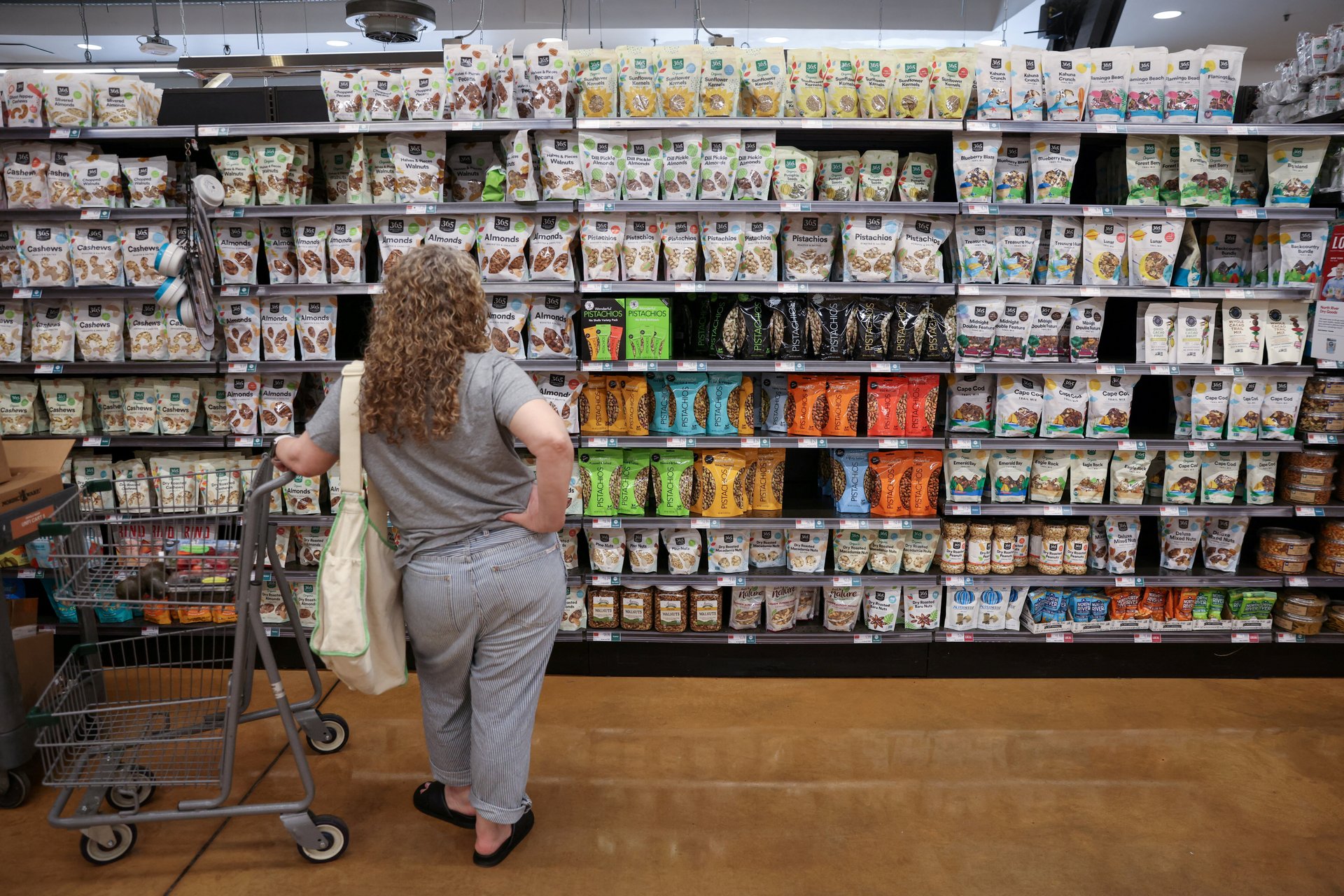How sustainable are the contents of your shopping cart? A new database has answers
A massive new study has estimated the environmental impact of tens of thousands of supermarket items.

A massive new study has estimated the environmental impact of 57,000 grocery store items. The researchers are among the first to assess the impact of products with multiple ingredients, and their work has the potential to pave the way for wide-spread use of eco-labels on foods.
“The whole premise behind the paper is to come up with a standardized or transparent way to estimate the environmental impact for products you can purchase,” said Michael Clark, a researcher in sustainable food systems at the University of Oxford, and lead author on the paper.
The findings themselves are not revolutionary—items with meat and dairy components are high in emissions, while those with vegetables are not—but it’s the number of items analyzed and the method developed for estimating the environmental effects that are likely to have the greatest impact.
Until now, most studies have focused on the environmental impact of wholesale commodities, like soy, beef, and wheat. But the items people buy at the supermarket tend to be more complex than a single ingredient. This new research aims to bridge the gap between that data and the need for information about the products people actually buy.
Items in the grocery store often contain multiple ingredients. This is where the work gets tricky.
To determine the emissions impact of individual items, the researchers needed to figure out the ingredients in every product. These data are hard to find; full ingredients information was available only for 2.5% of the products the group analyzed. Using these items, they trained an algorithm to predict the make-up of the rest.
The group, which based its analysis on products available in the UK and Ireland, gave the thousands of items an environmental-impact score by considering several factors, like greenhouse gas emissions, land use, and water stress. They also compared this data with nutritional information, and found broadly that healthier foods tend to have a lower impact on the environment.
Companies in the food industry are already taking note. “We’ve been working with some retailers,” said Clark. “They’re interested in having this information to figure out how they can use it on their journey to net zero.”
Those uses might be an internal corporate tool to measure the environmental impact of items, a public facing app, or even eco-labels directly on the products themselves.
Some research suggests eco-labels can be effective at helper consumers make more sustainable purchases. Four leading UK supermarket chains are piloting their own label system this summer. One of them, Tesco, tried adding carbon labels to its products years ago and gave up because of the difficulty of analyzing so many items.
Food production is a significant contributor to climate change, but the world is far from meeting its targets to reduce the industry’s emissions. At this point, Clark says, it’s the responsibility of everyone.
“Production, supply chains, and consumption—all those need to be changed to get us anywhere close to meeting [greenhouse gas emissions targets]. That definitely includes consumers, producers, and corporations,” he said.